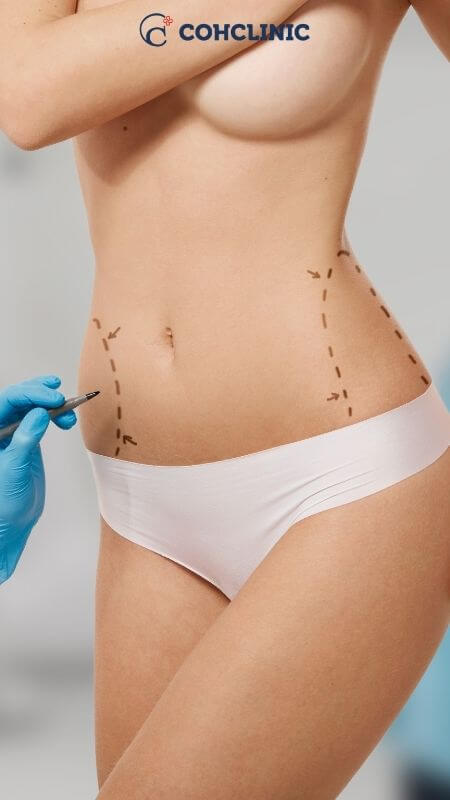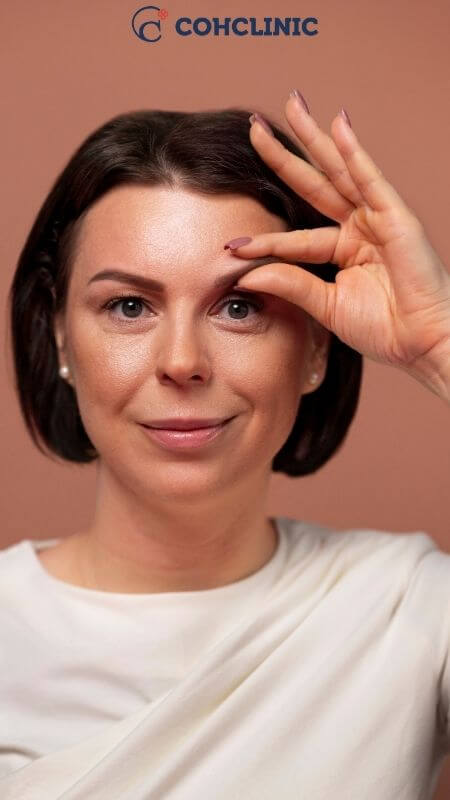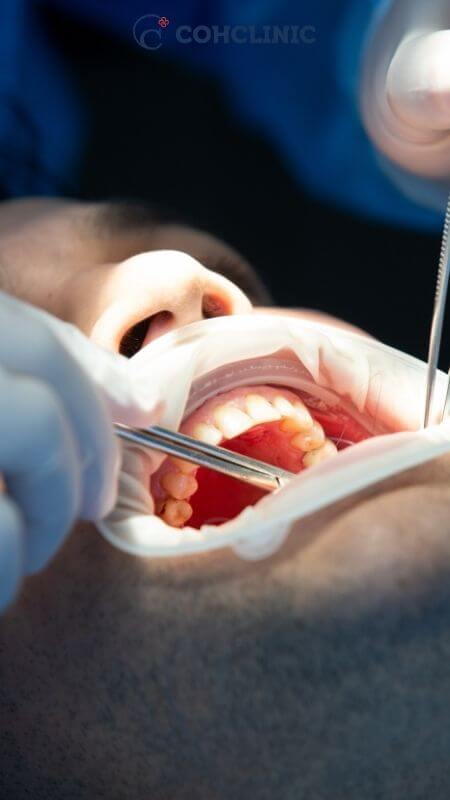Hair loss can be a challenging experience for anyone, regardless of gender. While hair loss is often associated with men, many women also suffer from this issue, leading to diminished self-esteem and confidence. Fortunately, advancements in medical technology have brought forth effective solutions, with hair transplants for women emerging as a viable option. In this blog, we will delve into hair transplant for women, shedding light on its benefits, procedure, and outcomes.
Causes of Female Hair Loss
Contrary to popular belief, hair loss is not exclusively a male problem. According to studies, hair thinning or hair loss affects up to 40% of women at some time in their life. This occurrence can be attributed to a variety of factors, including hormonal imbalances, genetics, stress, medical conditions, and even styling practices. Irrespective of the cause, hair loss can be a distressing and emotionally taxing experience for women.
Who is the Good Candidate for a Female Hair Transplant?
Are you thinking of getting a female hair transplant? The majority of women are good candidates for a hair transplant. Because they frequently have stable donor hair at the back of the head, mild to moderate thinning in a discernible pattern, and an unbroken hairline. Ideal patients have specific scalp or hairline thinning.
Female hair transplants help women who have lost their hair due to traction alopecia, trauma, or accidents, as well as those who have androgenic alopecia. They are also effective for patients who have undergone plastic surgery and wish to regrow their hair in the places where their incisions were made.
Almost any age can benefit from hair transplantation for ladies. The application of this technique to people with certain pre-existing conditions (heart, diabetes, liver failure, high blood pressure, renal failure) and pregnant women is not permitted. The average number of grafts determines the length of the procedure. Unshaven hair transplantation has to get special treatment. The grafts are inserted between the hairs so the process won’t involve shaving the hair. A few factors should be taken into account both before and after hair transplantation.
The Advantages of Hair Transplant for Women
The most technologically sophisticated medical-grade equipment and instruments are used by COH Clinic to give the finest quality treatments. Because each hair is transferred individually, resulting in fully natural and healthy-looking hair, Follicular Unit Extraction transplants are popular. In terms of hair transplantation, FUE offers a better level of surgical control.

The hair transplant surgery may take longer for women since they are less likely than male patients to consent to having their entire scalps shaved. At COH Clinic, we are well aware that the majority of women want to keep their natural hair length and conceal the area on the back or sides of the head where the donor’s hair was taken.
For hair transplant procedure to address their particular kind of hair loss, women can rely on COH Clinic.
What are the cons of hair transplant?
Typically, hair transplantation has no drawbacks or adverse effects. Only 10% of patients have brief skin swelling following surgery, but this goes away rapidly with the right treatment.
The most crucial factor in hair transplantation is selecting a group of skilled specialists and a reputable clinic with cutting-edge equipment. These post-operative adverse effects can be avoided by selecting the appropriate surgeon and clinic. In the worst situation, you can run across issues like:
- Bleeding: Because a hair transplant is a surgical operation, bleeding might happen. A competent surgeon can boost your chance of success with a transplant, though.
- Swelling: It may occasionally swell as a result of fluid accumulation, producing pain and discomfort, but it quickly goes away. Please contact your doctor if it takes more time than that.
- Scar: A linear scar may be left after a FUT treatment if the proper surgical technique was not used on the donor location. However, the scar’s visibility is influenced by the healing process and may fade as the hair grows.
- Discomfort: The patient only feels a slight amount of bearable discomfort throughout the hair transplant procedure, which is done under local anesthetic.
The Hair Transplant Healing Process
The likelihood of infection, bleeding, scarring, and numbness of the skin rises if the healing period is not taken carefully. The doctor’s recommendations throughout your recovery time, however, will help you avoid these potential issues and go back to your normal routine in 10 to 3 weeks. Hair transplant recovery should be as painless as possible. Allow your scalp some healing time.
- Please refrain from scratching the donor or transplant area.
- Wear a hat to protect your head from the sun for at least three weeks after surgery.
- To avoid impeding the hair follicles’ ability to recover, you should sleep with your head and neck raised.
All individuals receiving hair transplants should abide by the doctor’s directions. By how long it will take you to recuperate from hair transplant surgery, your surgeon will provide more precise aftercare recommendations.
Is hair transplant successful in females?
Female hair transplant is recommended for a select group of women, according to physicians. The percentage of women who will benefit from this surgery ranges from 2% to 5%. These are for ladies who have non-hormonal baldness and have lost their hair. Candidates who have already undergone cosmetic or plastic surgery but are worried about baldness around scars are also suitable.
Women with good donor roots are advised to undergo hair transplantation. Additionally, the “recommended” age restriction for hair transplantation is 24, thus you must be above 24 to do this treatment. It is a permanent, secure, and beneficial technique.
If you have tried other treatments but are not satisfied with the results or do not want to commit a lot of time or sessions, hair transplantation is the fastest and best solution. You can undergo the operation without shaving your hair. Following the creation of a model drawing of the desired hair, a surgical operation is begun with the patient’s consent. And hair transplantation is carried out in the region where the drawing was produced. Strong hair follicles are used to harvest the implanted grafts, and the hair doesn’t experience any hair loss.
Researching the operation beforehand and following your doctor’s instructions after hair transplantation will make it easier. With the evolving DHI technology, there are many successful cases of female hair loss.
Can female pattern baldness be treated with a hair transplant?
A larger hair split and a loss of the typical hair fullness of splitting are the effects of hair loss in women. The hairline does not regress in female pattern baldness, in contrast to male pattern baldness. The scalp, though, can grow more noticeable. Medical conditions, drugs, and psychological or emotional stress are just a few of the numerous potential reasons for hair loss in women. Hormonal imbalance during menopause is the key factor contributing to hair loss in women.
Unfortunately, women might have lifelong hair loss. A proper course of treatment can stop hair loss and partially restore hair, although results can take up to a year. The hair follicles in female pattern baldness are so tiny that they can no longer regenerate. Hair transplantation is the process of collecting follicular units from the donor region (graft) to provide a permanent solution to hair loss.
This is due to genetic resistance to hair loss in the donor location. For female patients with chronic hair loss, less invasive surgery has shown successful results when there are sufficient donor resources.
Conclusion
In conclusion, hair loss may significantly damage both men’s and women’s self-esteem. Although hair loss is commonly associated with men, many women experience it as well, driving them to seek effective solutions. Hair transplant for women is a viable and transformative option, providing natural-looking and healthy results.
The causes of female hair loss can vary, ranging from hormonal imbalances and genetics to medical conditions and styling practices. However, with the correct hair transplant procedures, such as Follicular Unit Extraction (FUE) or DHI, women can attain a greater degree of surgical control throughout the process.
We recognize female patients wish to keep their hair length and cover the donor location. With a more meticulous approach, only a small area is shaved for transplantation, allowing for seamless coverage with longer hair once the treatment is complete.
Even though hair transplantation has numerous benefits, any side effects should be carefully considered and well-managed after the procedure. A hair transplant can be a highly successful and permanent solution for women who are good candidates for the procedure, including those with specific types of hair loss.
The best female hair transplant Turkey at COH Clinic, we provide top-tier care, using advanced medical-grade tools and devices to deliver exceptional results. Hair transplants can be life-changing for women, instilling confidence and providing a revitalized, head full of beautiful hair. If you are considering a hair transplant, contact us at +90 (536) 934 6524 to determine if it is the right solution for your unique hair loss concerns.
Frequently Asked Questions
How long does a female hair transplant last?
How long does a female hair transplant last?
The transplanted hairs start to seem natural about six months following the hair transplant procedure and will keep growing for the rest of your life.
Do female hair transplants hurt?
Do female hair transplants hurt?
You could feel a tiny sting when the local anesthetic is being provided if you are getting a female hair transplant because it is done under local anesthesia. However, once it starts working, there shouldn't be any further discomfort throughout the hair transplant procedure. After a hair transplant treatment, you could have some soreness in the treated regions for a few days. However, this should only be brief, and you will be given medicine to make you more comfortable.
What are the side effects of hair transplant women?
What are the side effects of hair transplant women?
It's typical to encounter a tight, painful, and swollen scalp for a few days following a hair transplant. Scabbing is transitory where the hair transplant was done.







